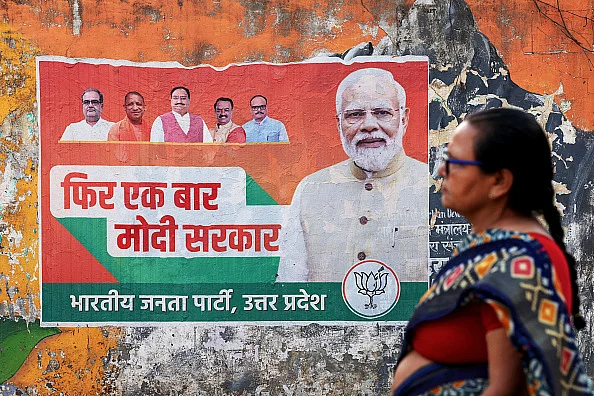During elections, political parties advertise inflated information not only about their development claims or promises but also about the failures of their opponents. However, recently, some journalists and fact-checkers have found out that there has been an increase in the number of ads filled with disinformation, half-truths and even lies.
In the times of viral content, everyone from individual social media influencers to celebrities to political parties are in the race to reach as many viewers/readers/consumers as possible. As the nation is going into the general elections next week, political content is being served on social media with much gusto.
Recently, an advertisement was shared on social media where a girl was seen talking to her parents about how the PM suspended an international war to evacuate the Indian students stranded in the region and brought them home. Immediately after this, an old video from March 2022 resurfaced, in which, the then spokesperson of Ministry of External Affairs, Arindham Bagchi, during a press conference had refuted similar claims. He had said that it is "Extrapolating that to say that somebody is holding off bombing or this is something we were coordinating is absolutely inaccurate".
It is not just the ruling Bhartiya Janata Party (BJP), who is being accused of spreading disinformation but the main opposition party the Indian National Congress (INC or a.k.a. Congress) was also caught using morphed images. In January 2022, just before the assembly elections in Uttar Pradesh, Congress party’s various social media handles shared an image showing two men from different religious communities holding a poster stating that Congress is coming in power in UP. The image was later found to be from West Bengal and was shared originally in March 2021.
Similarly, another ad was flagged by an independent digital media platform in March 2021 during assembly elections in West Bengal. A huge front-page ad was featured in some newspapers, showcasing a woman as beneficiary of the centre’s housing scheme; later it was found out that this was not true. She was neither a beneficiary of the scheme nor aware that her photo was being used to promote the scheme.
Besides the ads propagated by political parties, many others also find their way into public spaces with misleading comments or half-truths; but these ads don’t bear the name of their source. Recently, an ad was posted in Delhi projecting the Aam Aadmi Party (AAP) founder-leader and the sitting Chief Minister of Delhi, Arvind Kejriwal, currently in judicial custody in the liquor scam case, among other opposition leaders as corrupt while claiming the ruling party is acting against the corruption.
This ambiguity regarding the authorship of the advertisement is a deterrent to democracy and the elections process because the element of accountability is missing. Anonymous ads are not a new phenomenon, back in 2018; a similar smear campaign was run against PM Narendra Modi in which he was called 'The Lie Lama'.
The accountability factor is also missing when, nowadays, social media influencers are also playing a big part in the political campaigns. Political parties reach out to them to create content to further their agendas. Celebrity culture is not new in Indian politics; but earlier when celebrities campaigned for the parties the connections were clear, people knew who was supporting whom. But that connection is sometimes not clearly established on social media, and people who follow these influencers end up being influenced without knowledge.
It is not just the ads but also their medium which is being used to spread disinformation. TIME recently reported that YouTube, the social media giant run by Google, gave a go-ahead to many disinformation packed advertisements about India’s general elections. The advertisements, besides making fake claims about voting age, voting methods also propagated communal disharmony. YouTube enjoys a massive viewership in India which makes it even more dangerous that the platform is being used to spread targeted ads laced with disinformation. Even if these ads are removed, after being flagged, the damage is done; wrong information has reached voters who may not be equipped or even aware for the need to check the authenticity of the content being served to them on a globally reputed video platform.
In recent years, elections campaigns have become a colossal phenomenon with new ways of campaigning adding into the traditional ones. But this phenomenon is becoming increasingly unstable as well with the fast-spreading reach of fake news and half-truths. To maintain the sanctity of the electoral process is, it is important to maintain the sanctity of election campaigns.
















